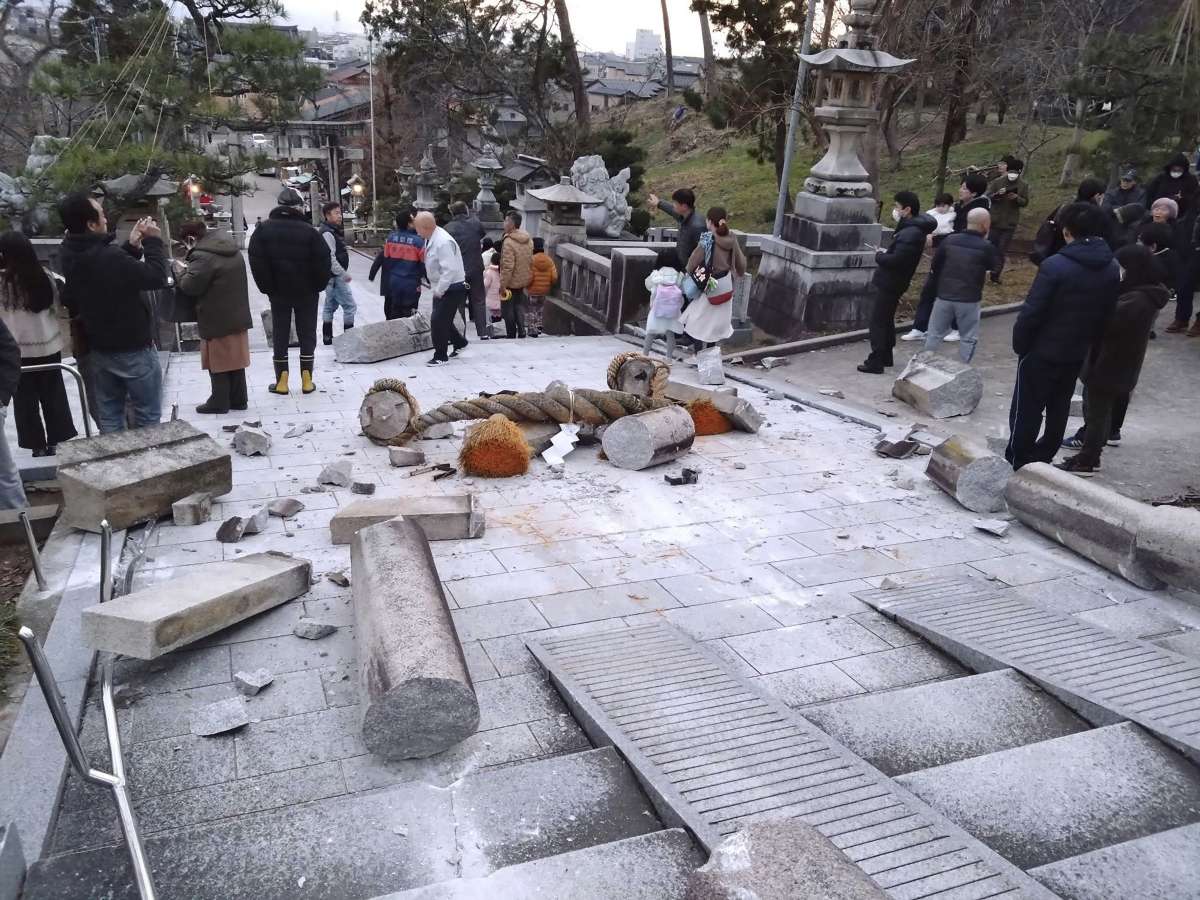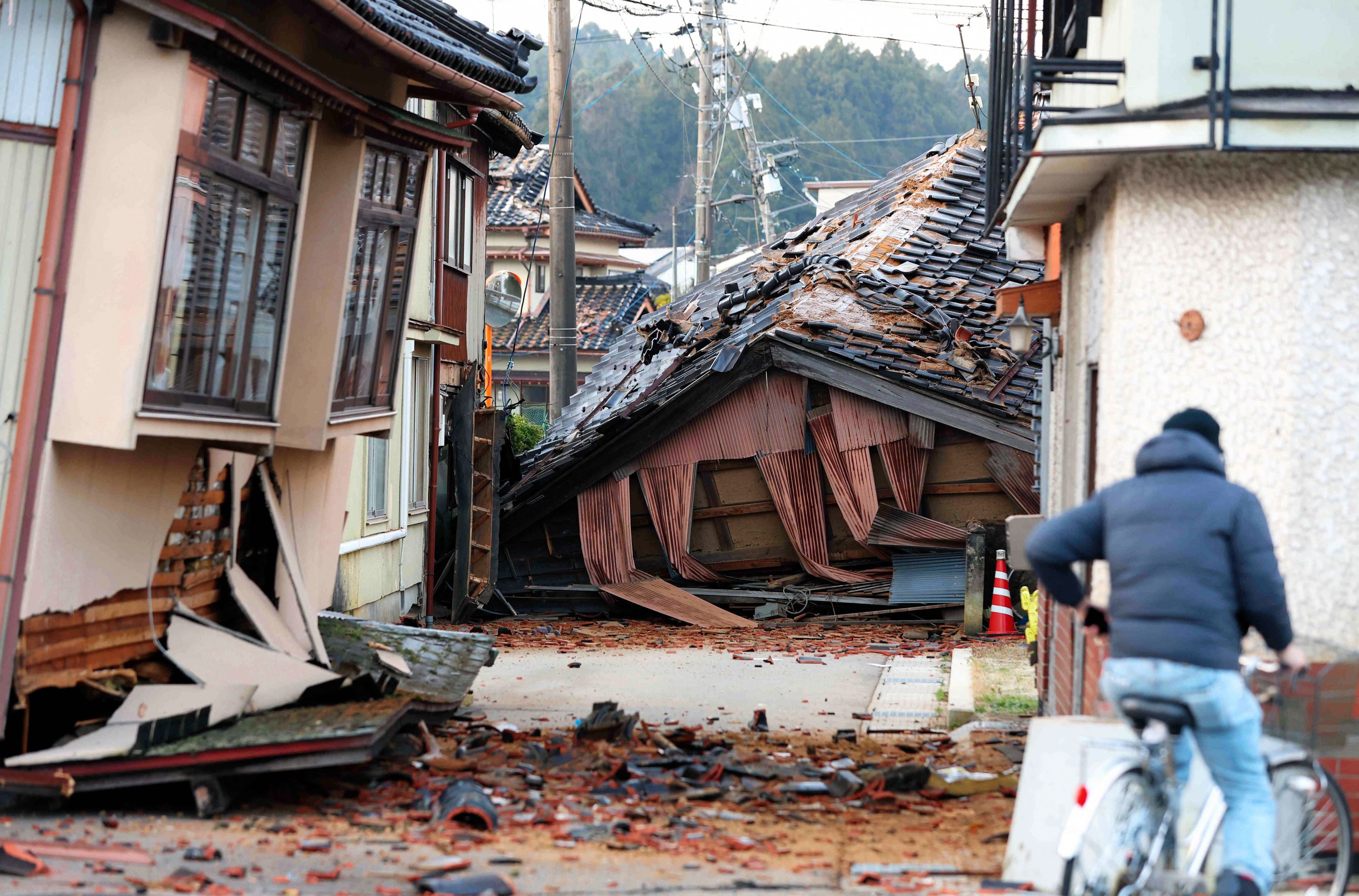The Japanese Tsunami Warning System

Japan, located in a seismically active region, has developed a robust tsunami warning system to mitigate the devastating impacts of these natural disasters. This system is a crucial component of Japan’s disaster preparedness strategy, designed to provide timely and accurate alerts to the public, enabling them to take necessary precautions and evacuate to safe areas.
Components of the Japanese Tsunami Warning System, Japan earthquake tsunami warning
The Japanese Tsunami Warning System comprises a sophisticated network of sensors, buoys, and communication networks.
- Seismic Sensors: Japan maintains a dense network of seismic sensors throughout the country. These sensors detect earthquakes and transmit data to the Japan Meteorological Agency (JMA), which analyzes the data to determine the potential for a tsunami.
- Tsunami Buoys: The JMA operates a network of tsunami buoys deployed in the Pacific Ocean. These buoys measure changes in sea level and transmit data to the JMA in real time. The buoys provide critical information about the actual occurrence of a tsunami and its potential impact on coastal areas.
- Communication Networks: The JMA utilizes a robust communication network to disseminate tsunami warnings to the public. This network includes television, radio, and internet platforms.
Effectiveness of the Warning System
The Japanese Tsunami Warning System has proven to be effective in providing timely and accurate alerts. The system’s success can be attributed to several factors:
- Rapid Data Analysis: The JMA has developed advanced algorithms and software to rapidly analyze seismic data and predict the potential for a tsunami. This enables the agency to issue warnings within minutes of an earthquake.
- Extensive Monitoring Network: The dense network of seismic sensors and tsunami buoys provides comprehensive monitoring of earthquake activity and potential tsunami threats.
- Effective Communication Channels: The JMA’s use of multiple communication channels ensures that warnings reach the public quickly and effectively.
Comparison with Other Tsunami Warning Systems
The Japanese Tsunami Warning System is considered one of the most advanced and effective in the world.
- Global Tsunami Warning System (GTWS): The GTWS, coordinated by the Intergovernmental Oceanographic Commission (IOC) of UNESCO, provides tsunami warnings to countries in the Pacific Ocean. While the GTWS serves as a global network, the Japanese system is known for its rapid response times and highly localized warnings.
- United States Tsunami Warning System: The United States operates a similar tsunami warning system, but it focuses primarily on the Pacific coast of the United States. The Japanese system, on the other hand, covers a wider geographic area and has a more comprehensive monitoring network.
Mitigation and Preparedness Strategies: Japan Earthquake Tsunami Warning

Japan’s commitment to disaster preparedness is evident in its comprehensive and multi-layered approach to mitigating earthquake and tsunami risks. The country’s efforts encompass a wide range of strategies, from public awareness campaigns to technological advancements, aiming to minimize the impact of these natural hazards.
Public Awareness and Education
Public awareness plays a crucial role in disaster preparedness. The Japanese government actively promotes public education campaigns to inform citizens about earthquake and tsunami risks, safety procedures, and the importance of being prepared. These campaigns utilize various mediums, including television, radio, newspapers, and social media, to reach a wide audience.
- School Education: Earthquake and tsunami preparedness are integrated into school curricula, starting from elementary school. Children learn about disaster risks, evacuation procedures, and how to respond in emergency situations. This early exposure fosters a culture of preparedness among future generations.
- Community Outreach: Local governments organize community events, workshops, and drills to educate residents about disaster preparedness. These activities often involve practical demonstrations, simulations, and discussions, helping to reinforce key safety messages.
- Public Service Announcements: Frequent public service announcements (PSAs) on television and radio remind citizens about the importance of having emergency kits, knowing evacuation routes, and staying informed during disasters. These PSAs serve as constant reminders to stay vigilant and prepared.
Disaster Drills and Evacuation Procedures
Regular disaster drills are a cornerstone of Japan’s preparedness strategy. These drills provide valuable training opportunities for individuals, communities, and emergency response teams. They help to identify weaknesses in existing procedures, improve coordination, and enhance the overall effectiveness of disaster response.
- School Drills: Schools conduct regular earthquake and tsunami drills, simulating various scenarios, such as evacuation procedures, sheltering in place, and first aid. These drills help students develop essential skills and build confidence in their ability to respond effectively in a real emergency.
- Community Drills: Local communities organize large-scale disaster drills involving residents, emergency responders, and volunteers. These drills test evacuation routes, communication systems, and the coordination of rescue efforts. They also provide an opportunity for residents to practice their emergency preparedness skills in a controlled environment.
- Government Drills: The Japanese government conducts national-level disaster drills to assess the readiness of its emergency response system and to test the effectiveness of its communication and coordination mechanisms. These drills involve multiple agencies, including the police, fire department, military, and medical services.
Technological Advancements and Infrastructure Improvements
Japan has invested heavily in technological advancements and infrastructure improvements to enhance its resilience against earthquakes and tsunamis. These innovations play a crucial role in early warning systems, disaster response, and the reconstruction of damaged infrastructure.
- Early Warning Systems: Japan has a sophisticated early warning system that detects earthquakes and issues tsunami warnings within seconds. This system relies on a network of seismic sensors and tide gauges that monitor for ground motion and sea level changes. The warnings are disseminated through various channels, including television, radio, and mobile phones, allowing people to take immediate action.
- Tsunami Walls and Breakwaters: Coastal communities have implemented various structural measures to mitigate the impact of tsunamis, including tsunami walls and breakwaters. These structures act as barriers, slowing down and reducing the height of tsunami waves, protecting coastal areas from flooding and damage.
- Reinforced Buildings and Infrastructure: Building codes in Japan have been progressively strengthened to withstand seismic activity. Buildings are designed to be more flexible and resistant to earthquake shaking, reducing the risk of collapse. Infrastructure, such as bridges and roads, are also built with earthquake-resistant materials and designs.
Japan earthquake tsunami warning – The recent earthquake and tsunami warnings in Japan highlight the importance of staying informed and prepared. While we navigate these uncertain times, a comforting thought is the delicious food that can bring us together. If you’re craving something warm and flavorful, why not explore the indian food near me options?
From fragrant curries to savory naan, there’s a dish for every palate. And just like a well-prepared meal can offer comfort, so too can staying informed about natural disasters. Remember, knowledge is power, and preparedness can make a world of difference.
While Japan grapples with the aftermath of the earthquake and tsunami warning, it’s important to remember that resilience and community are vital. If you’re looking for a way to connect with your community and enjoy some authentic flavors, why not explore indian store near me ?
Supporting local businesses can make a difference, and the warmth of Indian spices might just be the perfect antidote to the anxieties surrounding natural disasters.